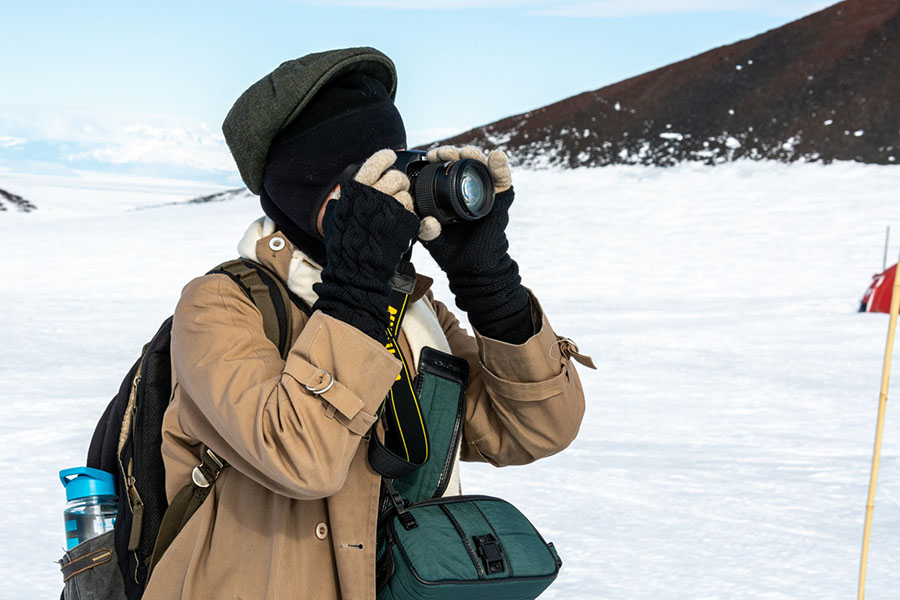
Photo Credit: Mike Lucibella |
On a hike up to Castle Rock, Sarah Airriess stops to snap a photo of the outcrop. |
The Worst Journey - and the Best Journey to Create a Polar Expedition Graphic Novel
By Elizabeth Delaquess, Antarctic Sun Guest Writer
Posted June 15, 2020
Artist Sarah Airriess is sharing one of the most celebrated accounts of the golden age of Antarctic exploration with a new generation.
The Worst Journey in the World is the acclaimed memoir by Apsley Cherry-Garrard, a member of Robert Falcon Scott's final, ill-fated Antarctic expedition. Over the course of the British Antarctic Expedition, more popularly known as the Terra Nova Expedition, Scott reached the South Pole in January of 1912, only to find that competitor Roald Amundsen had beaten him to it by mere weeks. Beset by weather and a lack of supplies, Scott and his small polar party perished on their return journey. While that was the most infamous episode of the expedition, the crew of more than a dozen other men logged many additional firsts as they studied and surveyed the largely unexplored region over their two years on the continent.
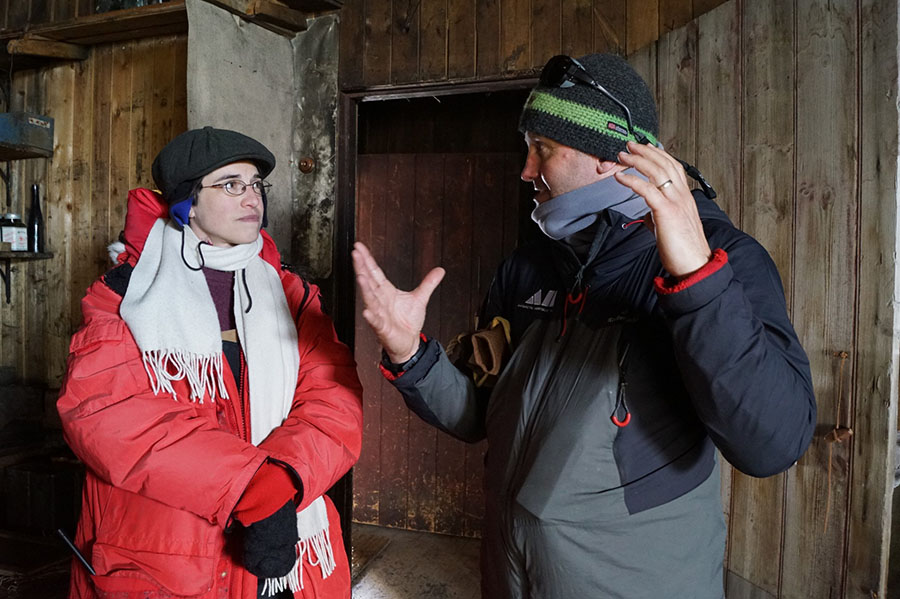
Photo Credit: Elaine Hood
Inside Robert Falcon Scott's historic hut, Sarah Airriess (left) talks with Nigel Watson, the executive director of the Antarctic Heritage Trust which manages the preservation of the region's historic huts.
Cherry-Garrard's book, published in 1922 after his safe return to Britain, details the experiences and suffering endured by Scott's crew over their years on Ross Island. It's given generations of readers powerful insights into the lengths people are willing to go in the pursuit of scientific discovery.
Now, almost 100 years after the book's first publication, illustrator Sarah Airriess is bringing Cherry-Garrard's story to life in a new way. She visited McMurdo Station this past austral summer as a participant in the National Science Foundation's Antarctic Artists and Writers Program to help create a serialized graphic novel version of The Worst Journey in the World.
Airriess studied animation in college before starting out in Vancouver's animation industry for five years. From there, she moved on to Walt Disney Animation Studios to work on movies such as The Princess and the Frog and Winnie the Pooh. While at Disney, Airriess first heard Kate McAll's BBC radio adaptation of The Worst Journey in the World, and "It just got its claws in me and wouldn't let me go," she said.
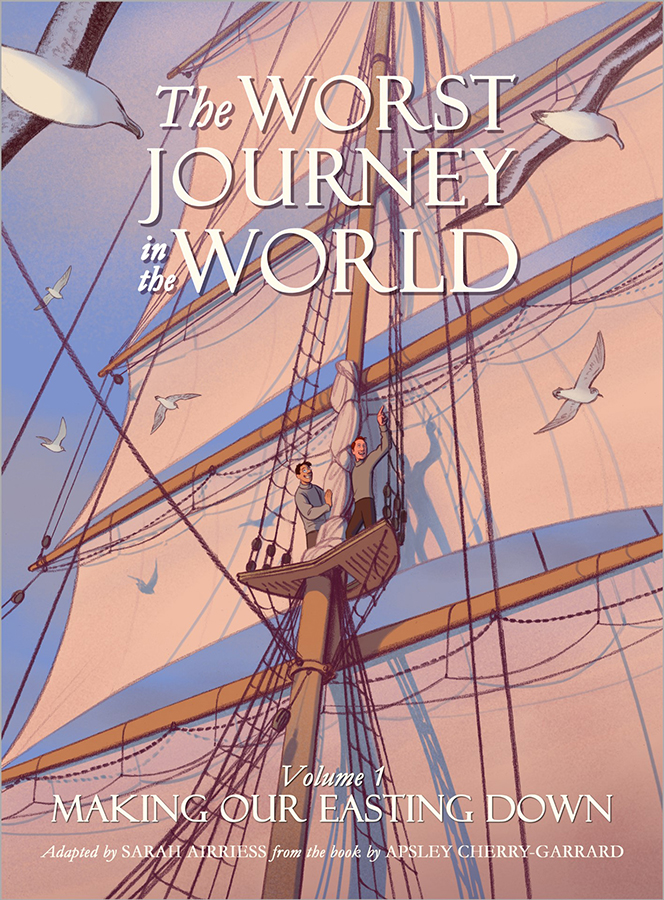
Photo Credit: Sarah Airriess
The cover of volume one of Sarah Airriess's planned Worst Journey in the World graphic novel.
At the time Airriess was starting to feel disillusioned from work, and the story gave her a new shot of strength and perspective.
"I grieved a particular change of direction at the studio, and then here was this story about this young idealistic 26-year-old who goes on the adventure of a lifetime. It's what he's always dreamed of and he meets all these amazing people and they're doing all these amazing things and then everything goes horribly wrong, and I felt that," Airriess said. "I had a picture of the polar party on my desk, and it just reminded me that no matter how bad things are, I'm not freezing to death in Antarctica."
After listening to the radio play over and over for a year, Airriess read The Worst Journey in the World and began researching the story and the people involved more intensively. Transfixed by the characters and the story, she eventually moved to Cambridge, England to be closer to the Scott Polar Research Institute which houses the most extensive collection of artifacts, diaries and other written material from the Terra Nova Expedition.
"I was just desperate to spend more time with them," Airriess said. "I had the benefit of listening to the radio play first, which had a really great cast who really brought out the personalities of the crew." Creating characters who are emotionally relatable is an important part of Airriess's work, and access to these materials allowed Airriess to delve deeper into their personalities and bring them to life. "I'm happy to spend a week in the archives reading terrible handwriting because I get to spend more time with these guys," Airriess said. "Once you care about the person, you will slog through 800 pages of longhand to find more tidbits about them because you just want to know more."
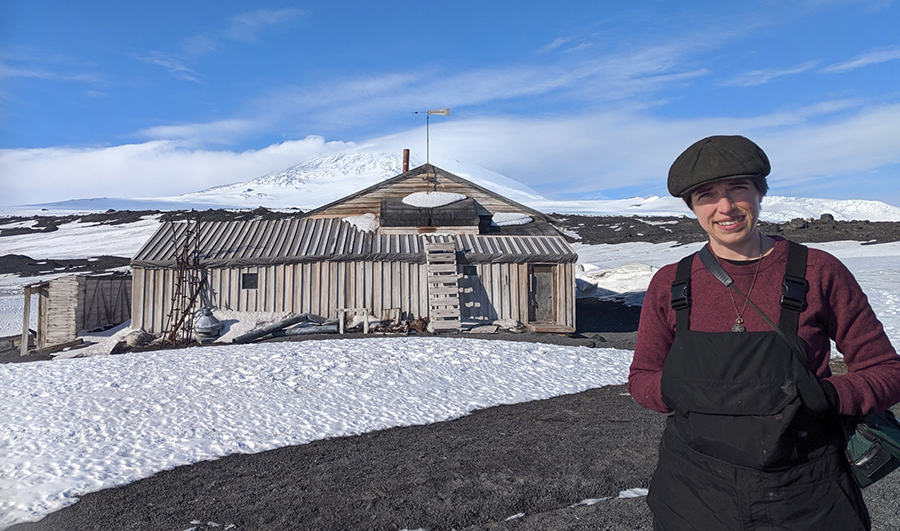
Photo Credit: Elaine Hood
Sarah Airriess poses for a photo outside of Robert Falcon Scott's historic hut at Cape Evans.
Airriess's month-long deployment at McMurdo Station allowed her to experience the climate, view the landscapes and get a close-up look at the historic huts on Ross Island where Scott and his team spent so much time. She said being there helps to accurately depict the geography and bring the characters to life by more fully capturing the experience of being in Antarctica.
"There's a bit in Cherry's book where he stands at the door of the Cape Evans hut and describes everything you can see from there. I read [the passage] again, in my last week at McMurdo, and I could see it all crystal clear," Airriess said. "I cannot imagine trying to draw all this without the gift of having been there – it would have been like stumbling around in the dark. Every page will show the benefit of the experience."
In addition to accurately depicting the landscapes and historic sites, creating a graphic novel adaptation of Cherry-Garrard's work involves developing the characters so that they resonate with readers. To do this, Airriess is drawing on her experience working on animated films as she fleshes out the characters and story. She said that many American animated movies made in the last two decades are overly plot-driven, moving too quickly from one point to the next "without giving you the chance to live with the characters and just have a nice moment." As inspiration, she cites the 2003 movie Master and Commander starring Russell Crowe as the captain of a Napoleonic-era sailing ship. She describes one character-building scene in particular where crewmembers disembark to explore the Galapagos Islands.
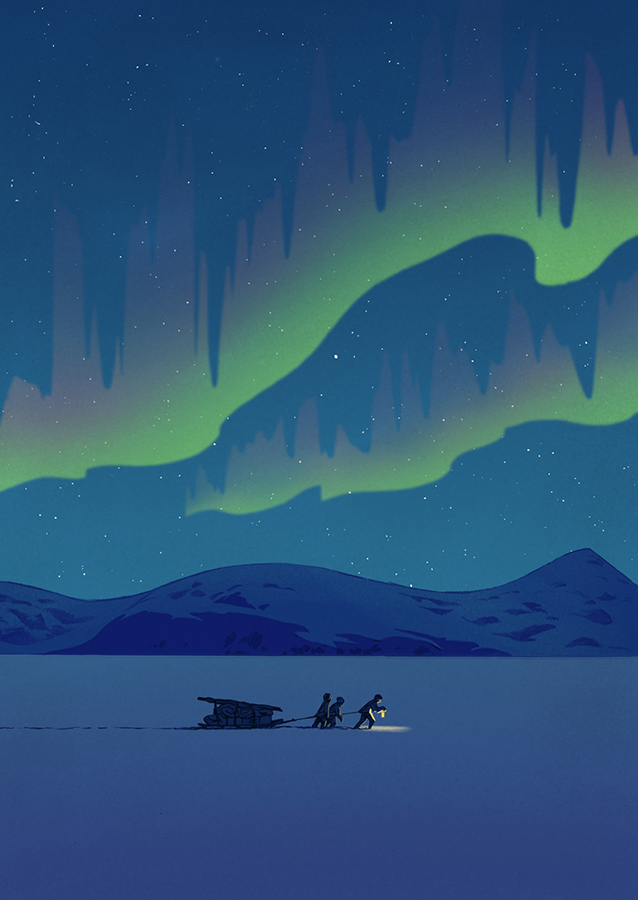
Photo Credit: Sarah Airriess
In an excerpt from her graphic novel a small team of Robert Falcon Scott's men manhaul their gear across Windless Bight under the light of the aurora australis.
"It's the counterpoint because there's this whole ongoing conflict between science and the mission of the ship, and you finally get to dwell on the science side where you've been practicing cannon fire and all this other stuff that's been happening on the military side, and finally the science side gets to breathe and you get to spend time with the characters exploring the Galapagos," Airriess said. "The movie just couldn't be the same without that, even though it's not really there for story reasons."
Airriess hopes to achieve a similar effect with her adaptation of The Worst Journey in the World.
"There's so many wonderful moments in the expedition which you don't realize tie into the broader story until the end, and you see that it's all fed into each other. But I don't want to rush and I don't want to pander. I want you to feel like you're riding along with these people and their story."
The Worst Journey in the World is full of sadness, disappointment, and death, and Airriess isn't shying away from any of this in her adaptation. But the depth of the characters and the way they treated one another is the reason why the Terra Nova Expedition has captivated Airriess more than other polar expeditions.
"What makes me burn to share this story is the example that these people set, of how to behave when everything goes against you, and being there to support each other and not leaving your friends to die alone," she said. "We could do with more of that in the world, and I want to show that people can be that."









